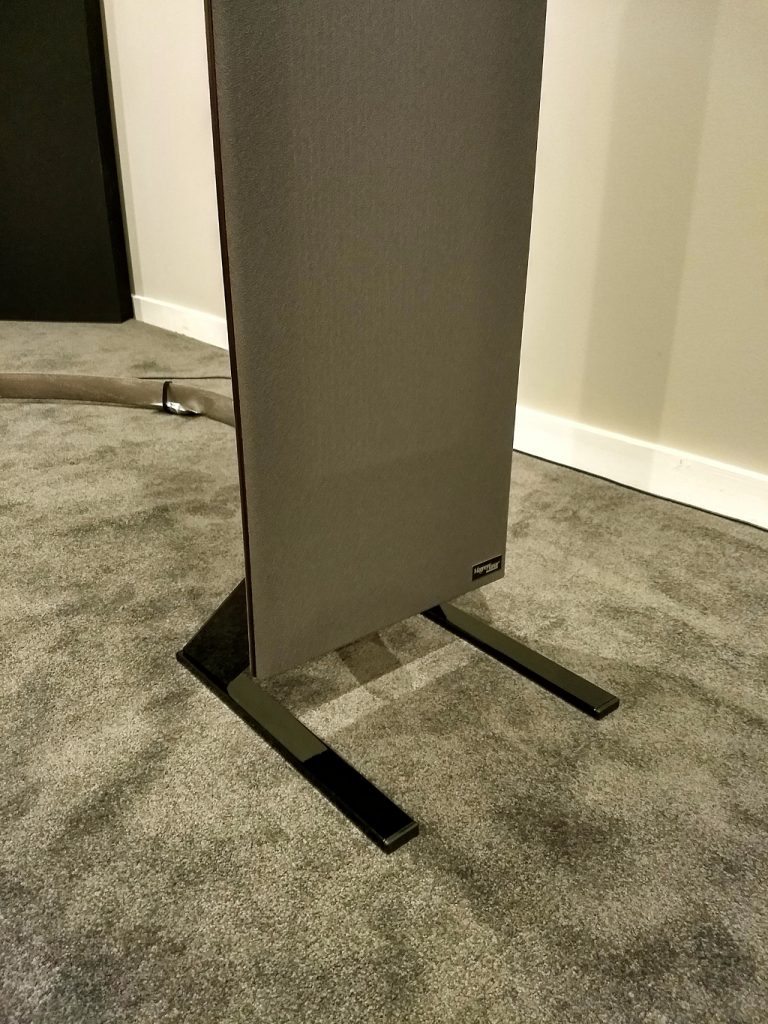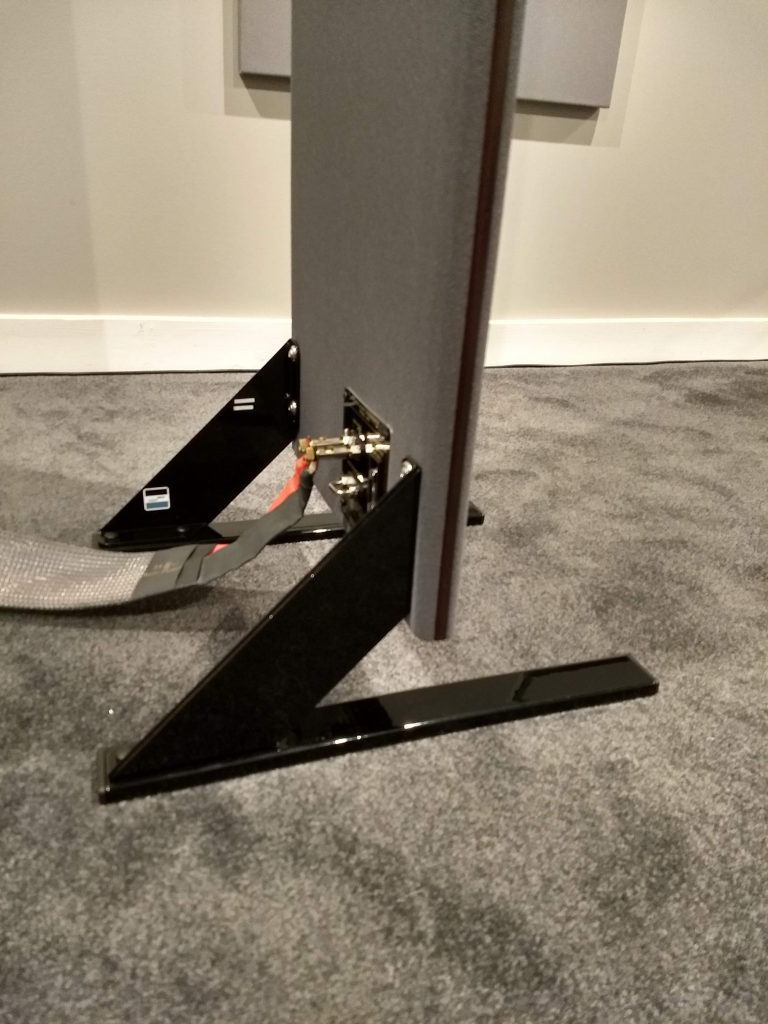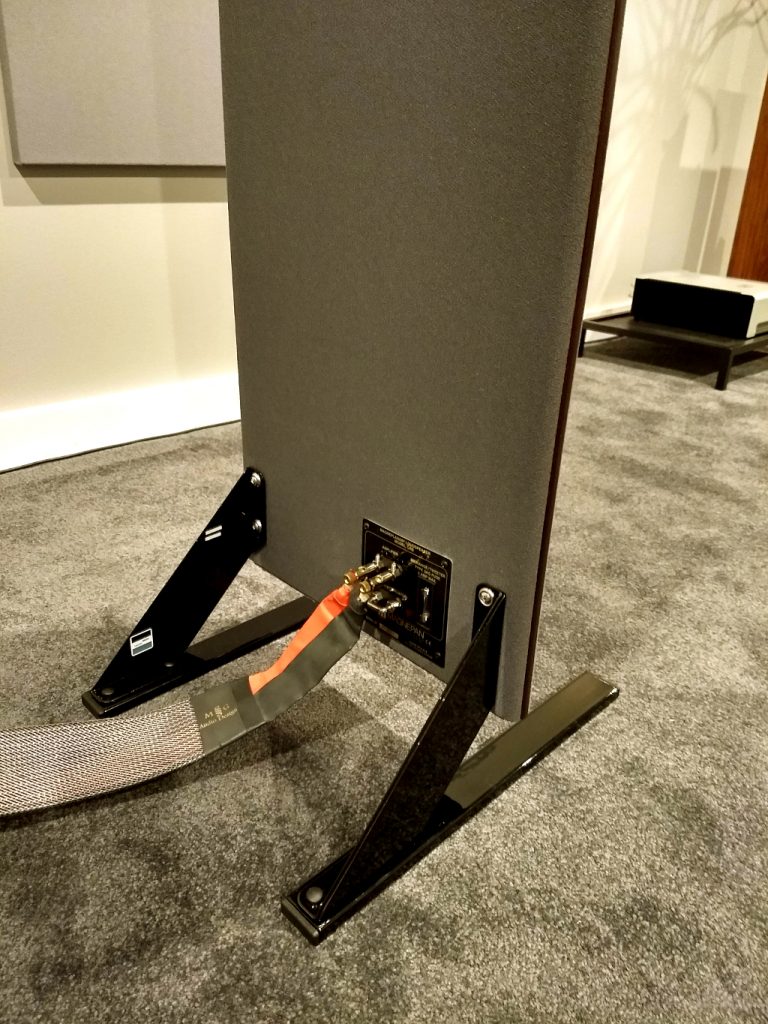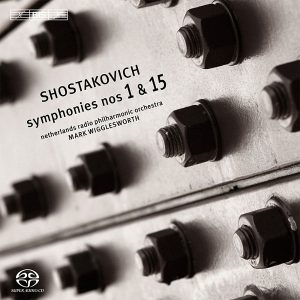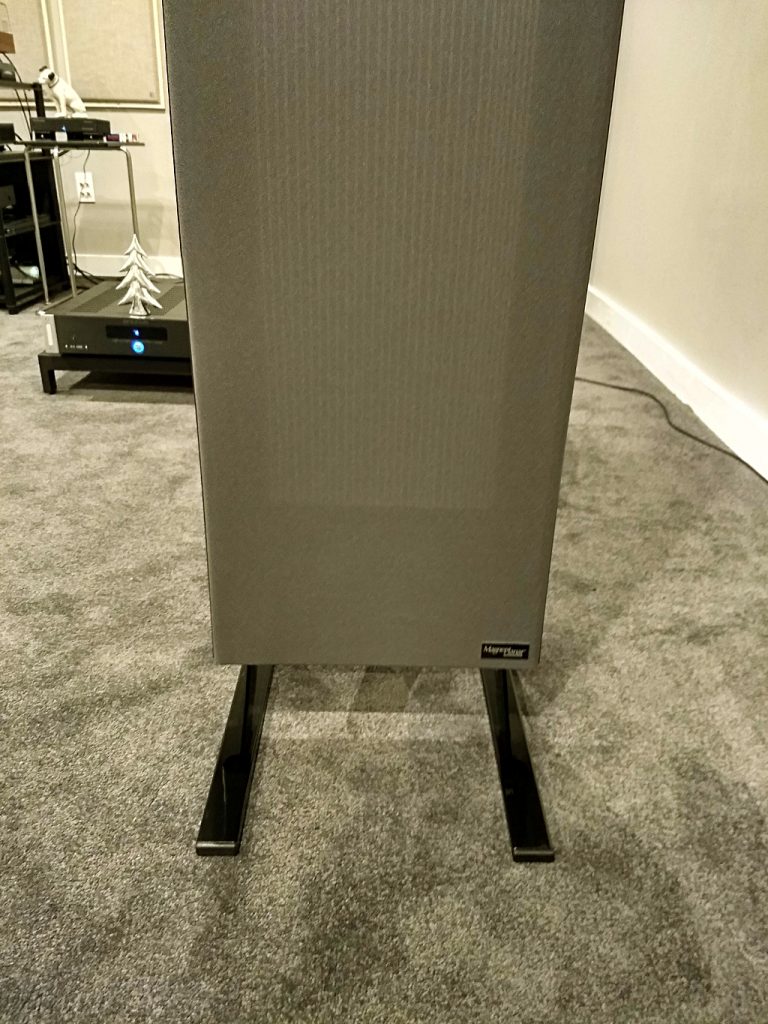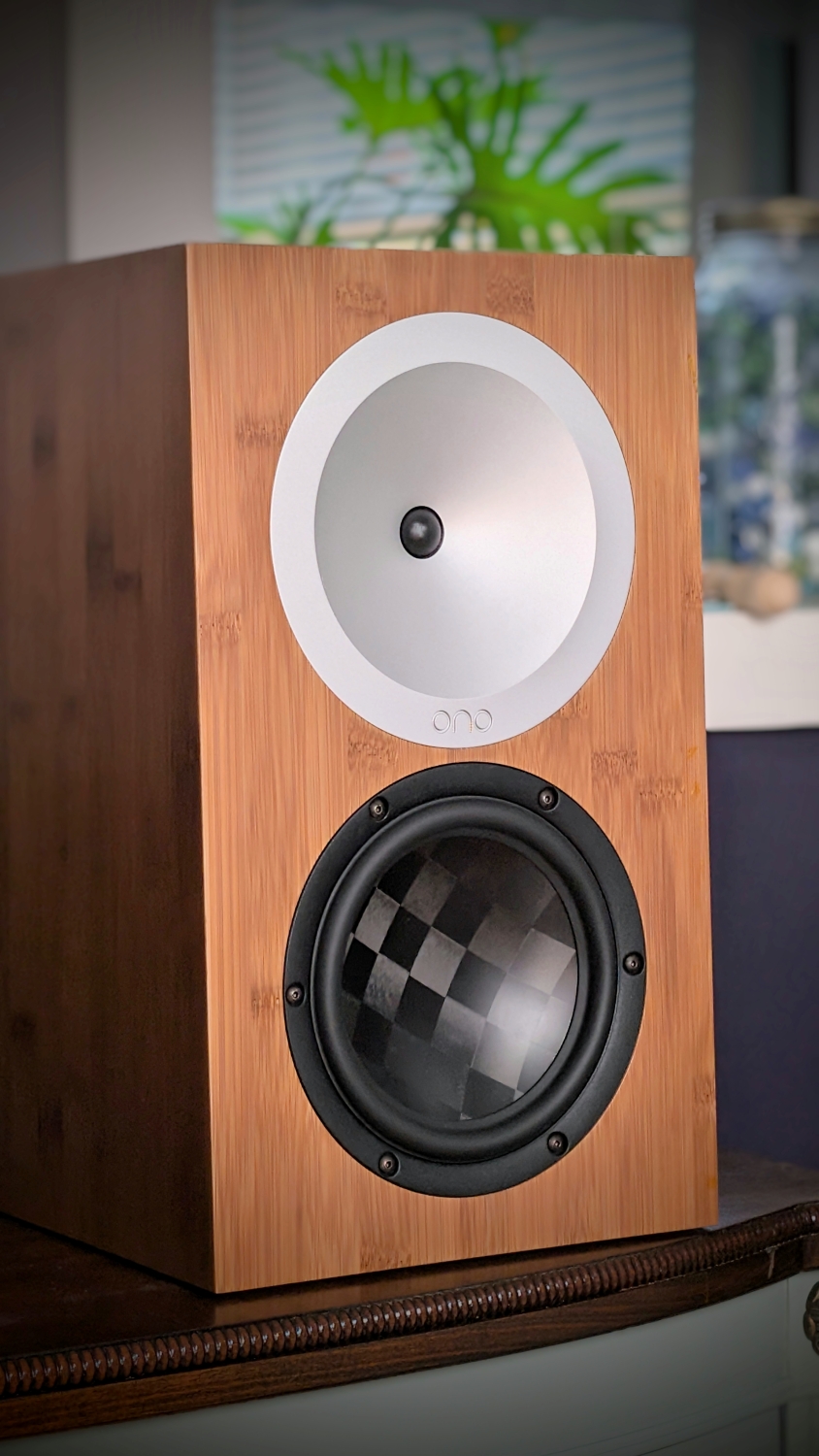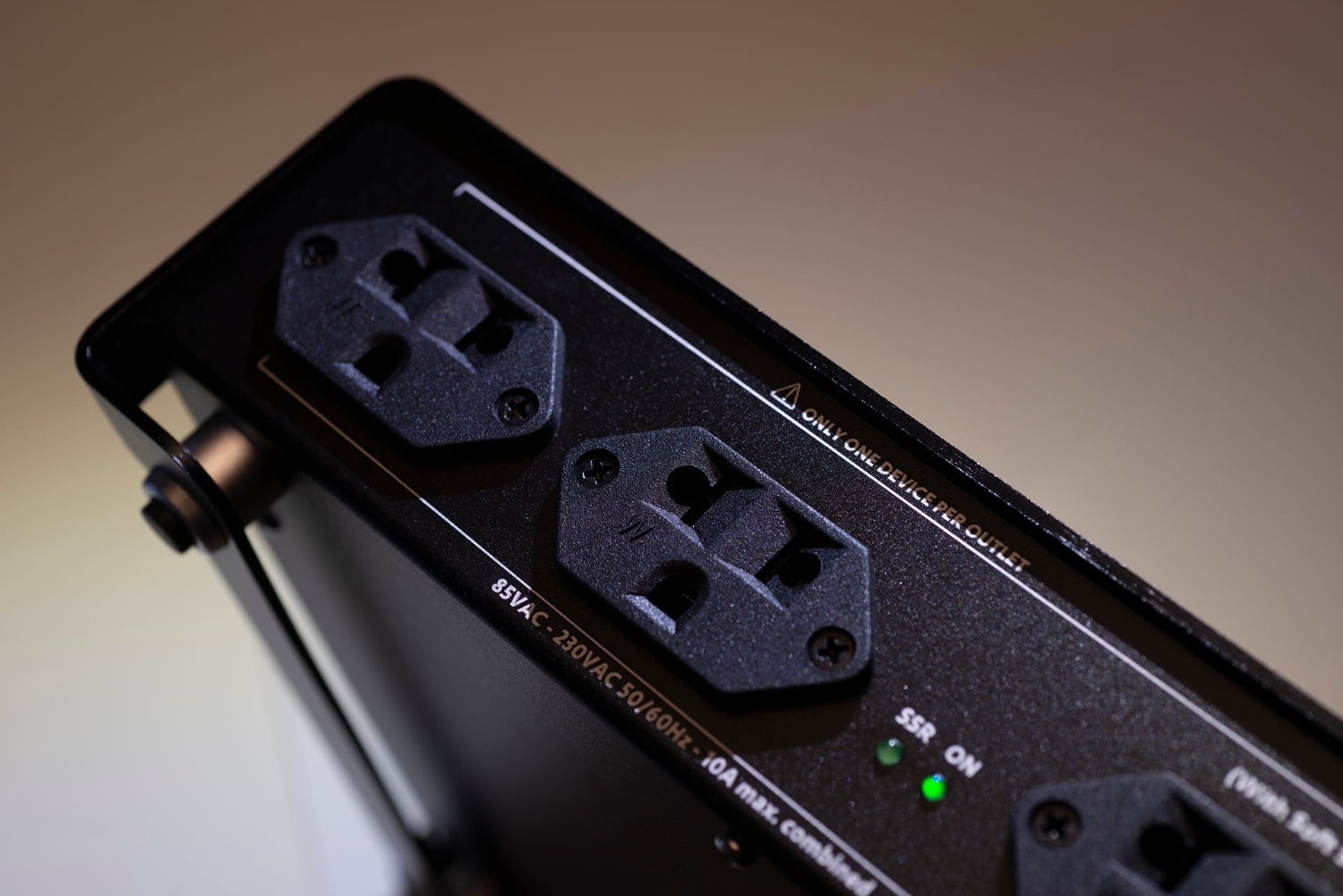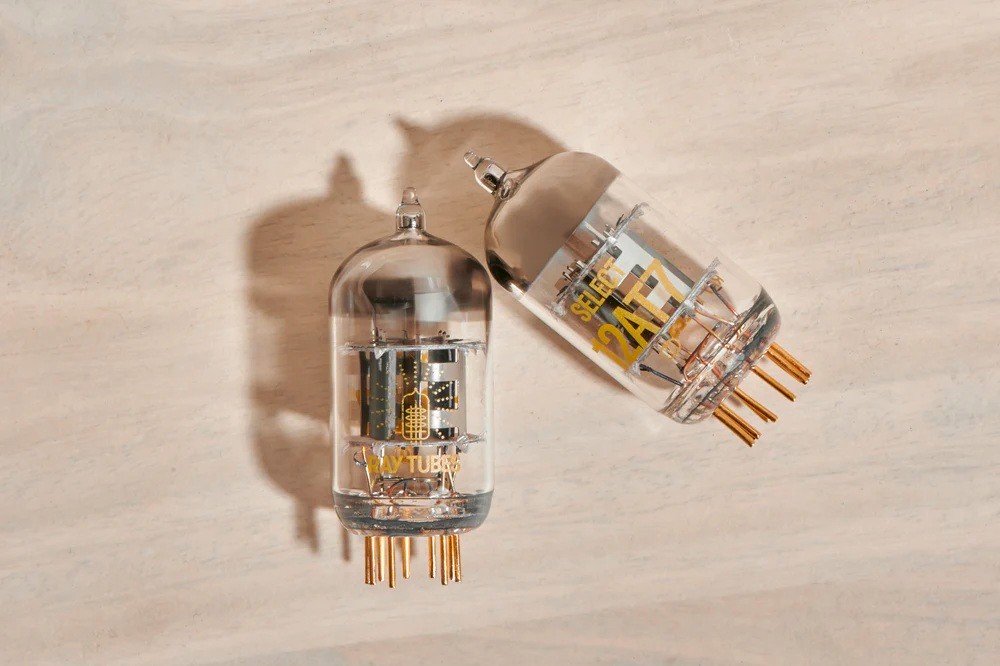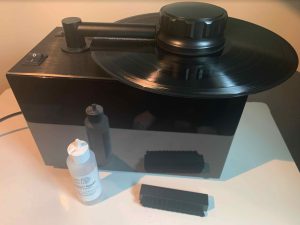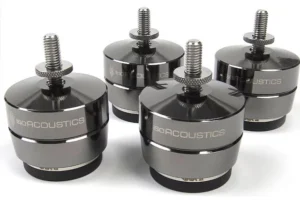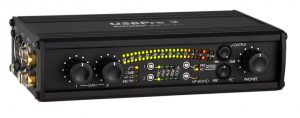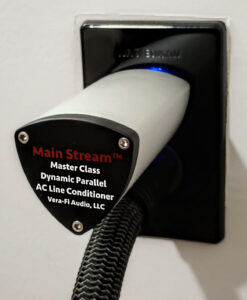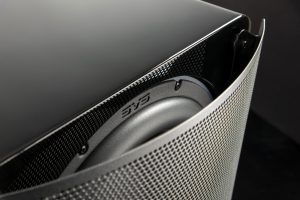When the opportunity came up to review the new Magneplanar LRS (Little Ribbon Speakers), even though I had thirty-plus years of experience with Maggies, I viewed the review possibility as something of a lark. Yes, there was a lot of buzz about the LRS, and yes, I was really pretty stoked to hear the latest Magneplanar technology. But the fact that, with all the hoopla surrounding the LRS—it took over five months to get the review pair delivered—well, let's say that kind of tempered my enthusiasm for the project! This is not the first time Magneplanar has offered a loudspeaker that's completely, quasi-ribbon in design, but it's the first time they've offered one at such an agreeable price point. One that would definitely help the masses—or maybe groups of more traditional-box construction loudspeaker audiophiles—take the plunge to get some impression of the new Maggie sound.
I had already decided that, right out of the gate, when the LRSs showed up, I was going to review them strictly stock, as supplied from the factory. That decision lasted about two days—I hated the stock stands with an absolute passion. The stock Magneplanar stands offer a ridiculously limited range of adjustment, with the Maggies always tilted in a backwardly-angled position. And, while the stand configuration is somewhat rigid, it's simultaneously also ridiculously flimsy, which tremendously, negatively impacts the overall sound quality of the speakers. I loved most of what I was hearing from the LRS, but 1) the bass was relatively tubby and poorly defined; 2) the lack of rigidity was causing some mid-bass panel flap around the speakers' rivet positions; and 3) my extensive personal experience with Magneplanars has shown that the speakers sound and image their very best with the panels in a completely upright position. None of that is possible with the stock stands; Magneplanars are built to a price point, and upgrading the supplied stands in any way on their end would price the LRSs out of their intended market. Meaning, most likely, concessions would have been made.
In my original LRS review—you can read that HERE—I noted that I had replaced the stock stands with custom wooden stands that I'd made for an older pair of Magneplanar MMGs I still had on hand. Those stands were very rigid, but primitively built from my own design, with the main emphasis on getting the MMG panels upright. Aside from definitely meeting that design parameter, they were essentially built with very little science with regard to their acoustical interaction with the MMGs—or the LRSs. They did help with the imaging and dispersion characteristics of the LRSs, but I couldn't help but wonder if there might be some serious performance gains with a purpose-built stand engineered specifically for Magneplanars and the LRSs.
Enter the Airborne Stands from Magna Riser: a custom built, Made in the USA metal stand with not only what appeared to be tons of good science behind them, but pretty stunning good looks, too! And priced very attractively; the Airbornes' MSRP is currently $229 USD. That's about half the price of many competing stands from other manufacturers. And the Magna Riser website offers stand models to fit just about every Maggie that ever—or currently—exists. The Airborne stands create the impression from their appearance that the LRSs are simply "floating in air;" a handful of emails and a couple of phone calls to Magna Riser's Robert Raus got the ball rolling on getting a review pair delivered.
The Magna Riser brand has been around for about five years now, and Rob supplied me with some interesting tidbits about the Magna Risers and his experiences in the audiophile world thus far. Magna Riser only build stands for Magneplanars, and they can be found on every continent—with the exception of Antarctica. Magna Risers have been shipped to 49 of the 50 states—they haven't sold a pair to anyone living in Alaska yet—Rob is offering free shipping to the first owner who purchases a set who lives in Alaska! All bulk metals for Magna Risers are hand selected in an attempt to find the most cosmetically acceptable pieces—that means Rob spends hours climbing through oily, dirty metals storage racks at industrial suppliers' warehouses. Precise machining is required during fabrication; 1/8 inch off sizing can render a pair of stands unusable. Each set of Magna Risers requires a cumulative drive distance of over 200 miles back and forth to 1) select metals, 2) drop off and pick up stands from the commercial powder coater, 3) tune the stands, then 4) drive boxed stands to the shipping counter of the shipper. And—because of commonalities of design in certain Magneplanar models—should owners of LRS or MMGs choose to upgrade to the .7 or MG 12 models, the Airborne LRS/MMG stands can still be used with the more expensive loudspeaker models.
Robert Raus is a really interesting guy; a musician and music lover, he's been building custom stands for Magneplanars now for five years. And from just about every material imaginable—composites, wood, steel, aluminum, carbon fibers, other metals—all in his search for the perfect acoustical complement to a variety of Maggie designs. His passion and zeal for this endeavor is unbelievably over the top; talking to him on the phone is darn-near like speaking with an evangelist! And some of the stand designs are incredibly complicated, requiring upwards of 20 hours each in fabrication and assembly. The stands are absolutely gorgeous, with some of the finest powder coating (as witnessed on the Airbornes) I've ever had the pleasure to admire! Rob has confided to me that he barely makes a profit on any of his stands, but his love for the work and his desire to make an impressive product drives him to excess. The stock stands on Magneplanar designs are one of the biggest factors in limiting their acoustic performance; the speakers will not more fully realize their inherent sonic potential unless they use well researched, intentionally designed stands. Rob doesn't insist that his stands are the only choice for improving Magneplanar performance, but with at least fifty variations of prototypes over a five-plus-year period, they're definitely the most well-researched! Since my review pair were being custom built for me, it'd be about six weeks before they likely arrived. I started marking the calendar!
Rob not only gave me constant updates on the progress of the Airborne stands, but also plied me with a steady stream of his setup tips and tricks, as well as filling me in on his personal philosophies on the Magneplanar experience. His obsession was such with the new LRS, that he bought his own pair for individual testing with every LRS Airborne stand manufactured by Magna Riser.
When the Magna Riser Airborne stands finally arrived, I was really impressed with the level of professionalism in the packaging and packing of the product—and their unbelievably professional appearance. Rob tells me that he frequently gets comments with regard to the "low price point" that, and based on their appearance, they obviously must be outsourced from China. When nothing could be further from the truth—the Magna Riser stands are a labor of love for Rob, and simply opening the box to observe the contents was a stunning reminder of Rob's near-maniacal level of professionalism and dedication to his product.
That said, from first opening the box, I had pretty much assumed that they'd be more "hollow" in construction, and would probably be heavily mass loaded and internally damped to achieve Rob's desired sound character for them. After unpacking them, handling them, and assembling them to the LRSs—I'm totally sure about the internal damping part, and they're more rigidly formed than I would have imagined from looking at them on the website. But then again, they're perhaps not quite as substantial as I would have imagined either. I don't mean that to sound as though it's a negative; when attached to the LRS, the Magna Risers are very stable and rigid—and especially very easy to move about while experimenting with positioning in the room. I hadn't noticed on any of the pictures on the website that the Airborne stands weren't joined by any horizontal framework for some reason, I totally assumed they would be. And that this would add a certain degree of rigidity to their implementation. Rob assures me that horizontal bracing was explored, but ultimately abandoned; the Airbornes sounded much better with each leg attached individually to the LRS framework.
I asked Rob about the tuning process, and he offered me the following information about his methodology: "The tuning process varies across the five or six different (structural) designs he employs for various Magnepan models; each utilizes resonance tuning in some way. The more sophisticated designs use combinations of constrained layer damping, tuning bars or blocks, and compression or interference fit and dampening or some combination of the various methods. The Magna Riser Ascension stands, which are designed for the higher-end Maggies, require three tuning methods simultaneously. The Airborne uses a proprietary dampening approach; it's nothing wildly exotic, but its implementation does take up to a few hours of intense comparative listening."
Rob has a selection of reference music tracks that he employs specifically for tuning the Magna Risers. He continued: "Intensely listening to performance tuning variations is a tedious and exhausting process, but the resulting sound is more focused, palpable, and harmonically intricate and balanced with improved bass, midrange and high frequency performance. The contribution (that tuning) offers is perhaps 10 to 15 percent sonically, but that's where the magic occurs. I drive over one hundred miles round trip to a dedicated listening site where all tuning and comparative listening with new prototypes is done. The room was designed by a senior executive of one of the audio worlds' most well respected names and has since retired; the "Riser Room" has since been made available to me exclusively. I am fanatical about wanting to only offer the highest performing sound from each model I craft. Life would be so much easier if I left out the tuning—and I'd save a small fortune in commuting costs. I don't include any of the extra hours of tuning in the stand costs; the price would escalate and perhaps become out of reach of my fellow Maggie owners. (That's) the real reason I build them: helping fellow Maggie owners more fully realize the intrinsic performance capabilities of their speakers—while connecting more with the music they love."
Rob continued: "The Airborne stand design went through at least five different prototypes over the course of six months and hundreds of hours of comparative listening before being offered to the public. Design changes included metal types, metal gauges, sizing and combinations of all three, as well as the inclusion of our latest resonance tuning. The Airborne also underwent knock down or knock over testing, in which we physically abuse the speakers on the stands seeing how stable they really are. Our design approach is like that of sailboat keel: allowing the speaker to be knocked over so far before it self-rights. Any design can be knocked over with enough brute force, but even the Airborne offers much improved stability when compared to the factory stands. The Airborne is the least stable of any of our models, but we've yet to receive a complaint about the structural integrity of the Airborne." I can definitely attest to the lack of stability of the stock stand design, having accidentally knocked them over on multiple occasions over the years!
My personal goal for the implementation of the Magna Risers was to improve the loudspeaker's vertical dispersion characteristics, and to improve their bass response. But, to my great surprise—Rob's vision for the Airbornes' improvement of the LRS overall sound quality is to also improve the performance and sound quality of the midrange and the tweeter as well. The Airbornes come with very specific placement markings on each stand leg, and there are very detailed instructions supplied to help guide the novice with attachment of the Magna Risers and room placement. Rob has a very specific preferred placement strategy, which places the quasi-ribbon tweeters on the inside. With that said, I assembled them according to his placement instructions for the individual legs, which are specifically marked for attachment to the correct woofer side and the correct tweeter side. But then I moved the LRSs so that the tweeters are on the outside edge of the panels—which is my preferred setup. I tend to place Magneplanars in a very wide stance, very close to the side walls, and very deeply into the room from the rear wall. With very little toe-in—it's how I roll, and in my opinion, this setup provides a remarkably believable stereo image. When all was said and done, I'd moved the LRSs about a foot and a half closer to the rear wall, and about ten inches further away from the side walls, which totally shocked me.
This is the point where I could probably spew a stream of expletives and curse like a sailor, both long and loud. I invited my next-door neighbor / audiophile buddy Bob over for a couple of nitro-infused, milk-stout beers, and to have another listen to the LRSs. At this point, I was attempting to show Bob the areas I felt were the obvious weaknesses of the LRSs, like how they'd distort with certain musical selections, and how excessive panel flexure would cause the bass panels to pop around the rivets on demanding transients with certain selections. The thing was, I couldn't get the LRSs to do any of those annoying things now, no matter how hard I tried, or how very hard I pushed the diminutive LRSs. With the Magna Risers attached, they behaved absolutely perfectly, with no trace of the anomalies that I felt would hold them back from being a world-class loudspeaker—despite being a Stereophile Class A rated component. I couldn't crank the volume knob loudly enough, or pump enough watts into them to get them to misbehave in any fashion. I was, well, baffled—to say the least!
One of the recent, go-to, demonstration quality recordings I've been obsessed with is a 16/44.1 download of the Swedish BIS label offering of the Shostakovich Symphony No. 1, featuring Mark Wigglesworth and the Netherlands Radio Philharmonic Orchestra. This is one of those excellent recordings that definitely makes a case that maybe CD quality is good enough—this is perhaps the most intensely dynamic performance in my entire digital library. Listening to the first fruits of the then seventeen-year-old Dmitri Shostakovich—what could possibly have been going on in that hyper-creative mind of his? Massive, bone-crunching, house-shaking transients that would seem to give the most cost-no-object systems out there some level of difficulty—and they're being effortlessly reproduced here by a pair of $650, entry level loudspeakers. Running full-range, with the Magna Riser Airbornes and a couple of judiciously placed subs, of course! I've listened to this recording so many times over the last couple of months—I can only imagine Beth's "Oh God, not again!" upstairs reaction. As Bob and I braced for the onslaught, he enthusiastically remarked that he definitely needed to dig deeper into Shostakovich's recorded catalog.
I want to confirm that when Rob says he tunes the Magna Risers to have a positive impact on the midrange and treble response, it's not just hot air. I listened to a variety of tracks that I find a trace steely or harsh in terms of the treble content; right out of the gate, the brand-new LRSs are a touch on the bright side. That tends to be helped somewhat by the break-in process, and careful amplifier matching, but Maggies are notorious—especially in the age of the quasi-ribbon—of emphasizing excessive treble response, especially on pop / rock titles. That's perfectly fine, but I'd try and stay away from using the supplied resistors to tame any perceived brightness. Try adjusting placement somewhat: Maggies tend to perform better in well-damped rooms with carpeting and some form of wall treatments; I use a mixture of ASC and Corning wall treatments placed at first-reflection points and they seem to do the trick just fine. The supplied resistors can be placed inline to help tone down the highs, but I'm not a fan; I feel they definitely diminish the clarity of the tweeter. Here's the good news: I was really stunned that just attaching the Airbornes offered a distinctly improved tweeter presentation, with greater clarity and less treble glare. And with a significant reduction in any harshness that might have been previously present. Everything was very...copacetic. I no longer doubt that attaching a specific Airborne leg to the tweeter side could actually impact treble response. It was...uncanny, to say the least!
And I'll also be very frank about something; when I first looked at the Magna Risers online, I obviously missed any info that may have been there about the jumper wires Rob supplies as part of the stand purchase. Rob once owned the massive Infinity IRS loudspeaker system, and bought a substantial amount of very high-quality, cryo treated wire to use in the rewiring of all 108 drivers in the IRS system. Rob no longer has the IRS, but he had a reasonable quantity of the rewire wire left over. And decided to offer it with the stands in the form of directional jumpers to replace the really cheap nickel jumpers that are stock from Magnepan. The wires are marked to indicate directionality, and I'm certain they're a substantial uptick from the supplied stock jumper. That said, I didn't test them as part of the review process.
I have been—unashamedly, for the last 18 years—a Magneplanar jumper and fuse block bypasser. When I first was made aware of the bypass, around 2000, you had to cut and strip the internal connectors from the internal wiring of the stock Maggies to eliminate the jumper and fuse blocks; now, the LRSs are wired such that you simply disconnect the jumper wire from the negative input terminal, and then disconnect and reconnect the yellow tweeter connector from the end of the fuse block to the positive input terminal. You don't even have to cut any wires; Magnepan has made it very easy. By the time in my Magneplanar experience I finally got to the point of understanding just exactly, actually how many hundreds of high current watts you really needed to simply enjoy Maggies at everyday listening levels, I also had gotten beyond any trepidation I might have had to even think about feeding hundreds of watts directly to the tweeter panel. While bypassing a 1) poorly constructed nickel jumper apparatus and, 2) avoiding having the power flow to the tweeter panel choked down to less than the size of a human hair inside a glass fuse.
Magneplanar tweeters can handle respectable RMS inputs and very intense momentary bursts and of clean, high current power with no ill effects whatsoever. That said: I wouldn't encourage anyone to perform the bypass without a thorough understanding of 1) the required high-quality amplification inherently required for this setup and, 2) a complete understanding of the potential warranty-violation most definitely brought into play by the tweeter fuse bypass. Hearing the sonic benefits and revelatory treble clarity of the tweeter bypass is believing; but for the vast majority of users—I'd probably stick with the safer option of maintaining the fuse and just replacing the jumper wires.
Since the Magna Risers appeared on the scene, the LRSs have become my everyday speaker. I never expected this. The Airbornes have definitely lifted the performance of the LRSs, and essentially fixed anything that I might have thought wrong with them, which completely blows me away. I thought that perhaps the LRSs had finally gotten broken in (I will give that a tiny bit of credit there), but I'm much more in the camp of "the Airbornes have fixed everything wrong with the LRS"—and transformed them into much more incredible speakers in the overall process. Here's the thing—while the LRS is Magneplanar's intro level speaker—their gateway drug, per se; when mounted to the Airbornes, they're transformed into astonishingly effective loudspeakers. That can rival the very best in terms of sound quality with speakers that cost much, much more. System synergy is the key; but I have literally spent days on end simply marveling at their ability to portray musical events with a scale and dynamics unthinkable from such relatively small loudspeakers. Any conversations you might have heard about the LRS as "a new classic"—believe me, it's true!
When Magnepan first introduced the MMGs years ago, a whole cult sprang up around them, with websites and blogs dedicated to tweaks and DIY upgrades. People started recognizing early on that despite their relatively low cost, and definitely being built to a price point, the small Maggies displayed the exceptional sound qualities of larger Magneplanars, and in spades. While Magnepan's idea was that by giving the consumer a taste of their offerings at a greatly reduced price, that would lead to a definite trade-up to the more expensive Magneplanars. And that has happened, quite a lot, actually. But so many felt that with modifications, the smaller MMGs could compete favorably with much more expensive ones, and that the weaknesses in the design could be easily overcome. And the biggest weakness clearly was the stock Magnepan stands—which severely hamstrung their performance potential. A number of stand designs soon appeared—I have no experience with these designs—but the prices were high, and some of the designs were not exactly elegant.
But the MMGs were a different animal from the LRSs—the LRSs give you waaaaaay more than just a taste of the Magneplanar experience. I think that Magnepan could charge $1000 for a pair of LRSs with the Airbornes attached, and people would pay it—the Airbornes take a really good loudspeaker, and make them really exceptional ones! And they look incredible. So, let's recap: 1) LRS, exceptionally priced at $650 USD; 2) Magna Riser Airborne Stands—Made in the USA—which lift the performance of the LRSs exponentially, for $229 USD and provide stunning good looks; and 3) with careful system matching, you have an amazing system that will go toe-to-toe with almost anything out there. And Rob tells me that he has a new LRS stand design in the works that could greatly improve on the already near-perfect Airborne! The Magna Riser Airborne stands are very highly recommended—do yourself a favor, order them now, you'll be stunned by the improvement!
Magna Riser Airborne LRS Speaker Stands
Retail: $229/pair
Magna Riser
All images courtesy of the author




